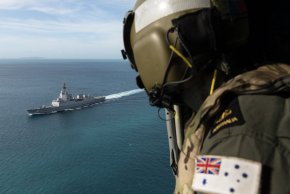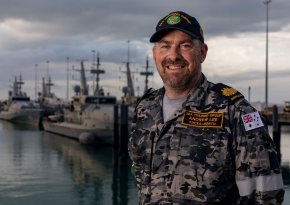Australia has access to literal tons of uranium. If Oz decided it actually wanted nuclear weapons, they already have the capability to get there very quickly.I do not believe this has been mentioned earlier in this thread, the PWR 3 reactor in question uses highly enriched uranium, 93 percent That is bomb grade uranium. Thus any nation with such a reactor, could if they chose take the reactor, open it up, remove some uranium and make many many nuclear bombs given that the amount of uranium in question over all submarines goes into the tonnes, and the amount of uranium needed to make a single atomic bomb is 25kg
Now is Australia likely to do this, no. However we could if we really really wanted to.
Would you feel comfortable if other nations decided they required nuclear powered submarines, and those nations chose the highly enriched uranium type of reactor. Say Spain, Italy, Brazil, Indonesia, Algeria, Egypt, Saudi Arabia, Turkey, Iran, Argentina, Japan, South Korea, Mexico, Canada, South Africa, that is sixteen nations apart from Oz, that might in a few decades or now have the financial and technical ability to operate a nuclear submarine. What is to stop Russia from selling a nuclear submarine to one of those 16 nations, and when we protest, Russia and the nation is question can say, well it was OK for you, we are simply responding to our legitimate security needs as Australia did many years ago.
I would say aside from the EU, N. American, and East Asian nations you mentioned (those are incredibly unlikely, and even if they did, it'd likely be with AUKUS or NATO cooperation), the possibility of proliferation through sales from Russia or China are legitimate concerns. But at the moment, none of those really have the financial or technical ability, and it doesn't seem particularly likely. I'd also say China is a more likely proliferation threat, as Russia doesn't exactly have the cash to throw around building nuke boats for other nations unless they pay for it...and the ones who can pay for it are the ones least likely to do it.
For Japan and S. Korea, they are extremely wealthy nations with advanced technical capability and a robust nuclear power industry that lives under threat from 2 neighbors who don't love them and have nukes. If they didn't already have plans on the shelf to rapidly go nuclear, they'd be silly.
Also, it'll depend on how the reactors are fueled up. Reactors use fission poisons to moderate the reaction (and prevent it from doing what you would want a weapon to do). Separating those out would be yet another complication...and at that point, why not just enrich the uranium just sitting around in the country's mines?


